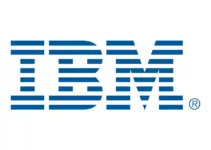I’m at IBM’s huge Think event this week and, holy crap, there are a lot of IT folks here. It continues to amaze me how much IBM has changed over the years and yet remained the same. The changes are tied to platforms that are designed to be deployed in the cloud using open platforms, and the things that have remained the same is an almost rabid focus on the needs of its customers. How this last is demonstrated is an unmatched ability to get big recognized customers on stage behind their global brands to advocate for IBM. These events are often very similar to a religious experience given the level and quality of customer testimony. One of the more interesting events was the Power9 event.
What makes this interesting is Power started out along with a number of other architectures competing with X86 and Intel but while the vast majority of other alternatives failed, IBM saved Power by doing something un-IBM like. They opened it up and Open Power has been successful thanks to that. Interestingly, Oracle, this week who copied IBM’s old lock in strategy missed their financial expectations while IBM has been doing impressively well. This goes back to IBM’s core culture professed by its most iconic CEO Thomas Watson Jr. who passed down to his successors one preeminent rule, “be willing to change anything but what you are”. IBM remains focused on meeting customer needs but everything else has largely changed and Power9 is representative of that change.
Let’s talk about some of those changes.
Open Ecosystem
IBM was famously known for being a closed system vendor. So much so that they were forced by a consent decree with the US Government decades ago to stop bundling software with hardware and allow other firms to compete.
Well those days are gone, and IBM has embraced Open Source with software and hardware at a level that is nearly unprecedented. Open Power is an open ecosystem which allows customers to both better understand what is under the covers and provides an unprecedented level of choice. These choices have forced IBM to up its game and focus on competing on merit as opposed to locking in and milking customers which is what a closed ecosystem typically creates.
Cloud Deployment And AI Optimized
The dominance of X86 has also forced IBM to specialize and this allows them to, with less resources, pick its markets and optimize for them. Rather than trying to provide something for everyone and becoming a jack of all trades, but a master of none, they are a master of cloud and hybrid cloud deployments. SAP was on stage attesting to how much better HANA is on Power9 and Richemont’s Director of Global Infrastructure. Richemont is interesting in and of itself being a holding company for some of the world’s most powerful luxury retail brands. These power players basically confirmed that at scale Power9, for them, has no peer.
IBM represents that they are 46x faster than Google and 3.5x faster than Intel on machine learning at scale. The time it takes to train a system is one of the huge critical paths to deploying one of the new AI solutions. These solutions have become critical for bank like institutions trying to protect against fraud. This is the advantage of focus. Testifying to this accomplishment was the Senior Director of Architecture and Engineering for PayPal (who, apparently is also a Forrester Analyst). For him the openness of the platform was even more than the performance showcasing the power of IBM’s very different approach.
Delivered Secure
Another thing that hasn’t changed at IBM is their focus on Security. One of the advantages OS/2 had over Windows was that it was more secure and what many may not know but the foundation for modern Windows, which is vastly more secure, was a clean room version of OS/2. This tradition carries forward with Power9 which wasn’t on the list of platforms plagued by the recent set of ugly security problems that Intel is dealing with at the moment. This focus on security has always defined IBM as a company that didn’t outsource security and took the exposures seriously early on and still largely differentiates by being more focused on security than its peers.
Wrapping Up: Performance + Value
In the end Power9 is a fascinating example of IBM’s changes over the years. It has changed massively since I worked there in terms of technology and openness. But I also see and feel a similarity to the old IBM I worked for with its near rabid focus on customers, those customer’s love for IBM, and its unwavering focus on security. IBM remains the leading example of a firm that has changed what needed to be changed and didn’t break what wasn’t broken. That was all showcased in this Power9 presentation and, once again, it is good to see Big Blue be Big Blue.








